
Can a $15 Field of Shorts Come Out on High?
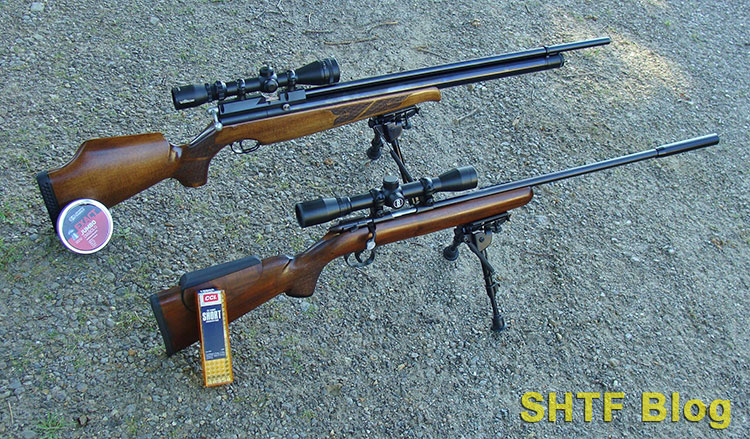
Gasoline and ammunition prices being excessive, I’ve spent extra time on my yard vary lobbing pellets at longer distances by fast- stepping airguns. Airgun projectiles have, for essentially the most half, remained obtainable at truthful costs, to incorporate premium pellets ordered by way of specialty suppliers. And when the latter sorts are shot by the most recent style of higher-end air rifles, issues can get fascinating.
Hit the best mixture and a outstanding diploma of accuracy is feasible at hundred yards – and even additional, utilizing aerodynamic airgun “slugs” that resemble bullets. Thus far, I’ve caught with typical diabolo pellets, shot to 100 yards by a tack-driving .22-caliber pre-charged pneumatic rifle. In contrast to the multi-pump pellet weapons that gave us train as children, every successive shot from a PCP model doesn’t require a brisk exercise.
As a substitute, a PCP gun is “pre-charged” by way of an exterior high-pressure air supply: usually, a scuba tank, particular airgun pump, or HPA compressor. As soon as pressurized, it’s only a matter of working the motion, just about just like the bolt of a .22 rimfire. These with rifle-length reservoirs will typically yield 25 to 40 helpful pictures (or extra), producing astonishing accuracy and a really quiet report. And being airguns, they can be utilized in spots the place firearms could be off-limits. Nonetheless, for me at the least, there’ll at all times be a spot for a quiet .22 rimfire rifle.
“Quick” Story
Throughout a latest summer season’s eve spent sniping small reactive metallic targets to 100 yards, the strain gauge on my airgun indicated it was lastly quitting time. Leaving the rifle behind, I headed downrange with a can of spray paint to the touch up the impacts – after I occurred to identify a big porcupine in a prized apple tree close to the far finish.
It was both my orchard or the porky, so I made a beeline again up-range. The airgun, a .22-caliber Air Arms M-400 (now the 500-series), is tuned to launch 15.9-grain JSB pellets at 920 toes per second (fps) – efficiency that appears just like some .22 rimfire masses.
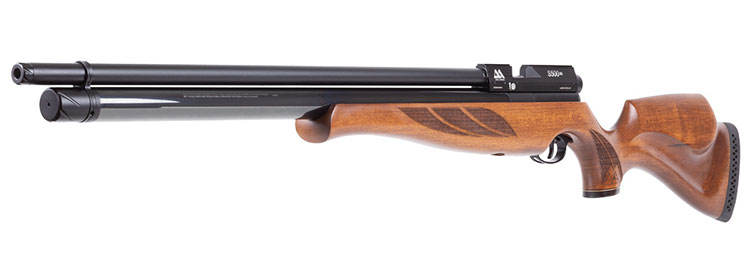
Air Arms S500XS Xtra PCP Air Rifle with regulator | Pyramyd Air

JSB Diabolo Precise Jumbo .22 Cal, 15.89 Grains, Domed, 500ct | Pyramyd Air
However reasonably than attain for the airgun, I headed towards the home after a primary single-shot bolt-action .22 rifle, and a few Shorts. The growing older Remington Mannequin 510 was my go-to critter-control rifle previous to the acquisition of the AA M-400 however, these days, the latter handles most such chores with much less worries about collateral injury.
Nonetheless, it by no means did fully out of date the trusty Remington .22 rifle. The explanation boils all the way down to projectile power.
.22 Airgun vs Rimfire Energy
In keeping with airgun hyperbole, my PCP rifle qualifies as a “magnum.” In the meantime, in firearms phrases, the .22 Quick (America’s oldest metallic cartridge) is taken into account anemic. Maybe, however its 29-grain bullet is double the load of many .22-calber pellets. Thus, at the same muzzle velocity (MV) of 950 fps, the heavier bullet generates twice as a lot muzzle power – “tremendous magnum” by airgun requirements! And the distinction turns into obvious as animate goal sizes improve.
For pest birds by pigeons, normal .22-caliber pellets with MVs of 800 – 900 fps are efficient. They’re additionally safer than rimfire masses in farm settings that always contain rooftop pictures close to staff and livestock. The identical projectiles may even deal with grey squirrels with cautious taking pictures. However bigger species will be iffy. I’ve taken woodchucks by way of exactly delivered head pictures, however a .22 rimfire is the extra humane minimal.
And like groundhogs, porcupines run giant – and hard! Thus, even with .22 LR hollow-points, head pictures are the higher alternative. Nonetheless, as a result of this porcupine was in a tree, the safer compromise was a .22 Quick. The Remington was zeroed at 25 yards for a plain lead round-nosed model, so I did my greatest to shut the gap whereas trying to find an appropriate backstop.
A protected shot lastly materialized at 35 yards, at which level I known as it good, eliminating the tree-chewing “drawback” by a surgical shot. Which acquired me to questioning about how .22 Shorts may evaluate to at this time’s high-performance air rifles at longish distances. On the time I used to be standing on a 100-yard vary, so it appeared like a superb excuse for a take a look at.
Methods to Construct a Yard Capturing Vary (shtfblog.com)
.22 Quick vs Airgun: The Check
Previous to the most recent brainstorm, I shot teams by the above .22-caliber PCP rifle in 10-yard increments out to 100 yards. The ensuing trajectory-plot was the gateway to scaled-down “lengthy vary” observe, a subject for a separate put up. For this go-around, I made a decision to make use of the identical take a look at procedures, substituting .22 Shorts for airgun pellets.
In the event that they flew flatter with cheap accuracy, for a few of us at the least, they could present an reasonably priced various to an expensive airgun.
The Rifle
I caught with my circa-1960 Remington Mannequin 510 as a result of appears to shoot the whole lot properly. Typical of many others from that period, it’s chambered to fireplace .22 Quick, Lengthy, or Lengthy Rifle cartridges. I’ve tricked it up with some stock-work, a special set off guard, and an airgun “muzzle brake”, and so on., however these touches are purely beauty.
At its coronary heart, this well-used M-510 continues to be a primary rimfire. The scope is an equally primary Bushnell 4X Rimfire model. However a few of these plain Jane .22s can shoot, and this one’s no exception.
The Load
I dipped right into a stash of 29-grain CCI Goal .22 Shorts, amassed over time as they grew to become obtainable. CCI advertises their muzzle velocity as 830 fps, however my mine from a number of heaps averaged a a lot quicker 950 fps – not essentially a nasty factor since they nonetheless stay subsonic.
Some high-speed Shorts may cross that barrier to supply a loud supersonic crack. CCI’s Hole Level .22 Shorts would make a greater looking alternative, nonetheless, their 1105 fps MV is on the sonic edge – a doable concern for these of us in search of quiet masses.
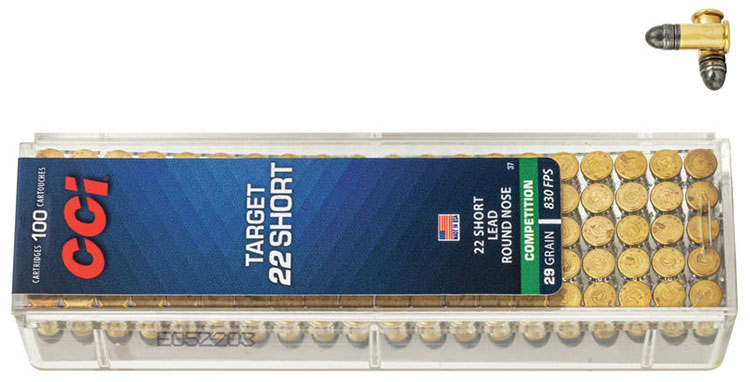
Purchase Quick Goal for USD 15.99 | CCI (cci-ammunition.com)
Check Process
The primary order of enterprise was to re-zero the Remington/.22 Quick mixture from 25 to 40-yards, the identical distance I used for the airgun take a look at (and in addition its zero distance).
Subsequent up got here trajectory-plotting in increments of 10-yards, beginning with a brand new goal set at 100 yards. To extend the chances of capturing crazy Shorts, I affixed a 4 ½” Shoot n’ See bullseye to the higher portion of a white IPSC goal. The bull served because the aiming level all through the take a look at.
To accommodate yardage modifications whereas sustaining a stable bench relaxation, I mounted the goal to a moveable cardboard field. Distances have been established by zapping the bench with a laser rangefinder. Capturing was timed to happen between mild early-morning breezes.
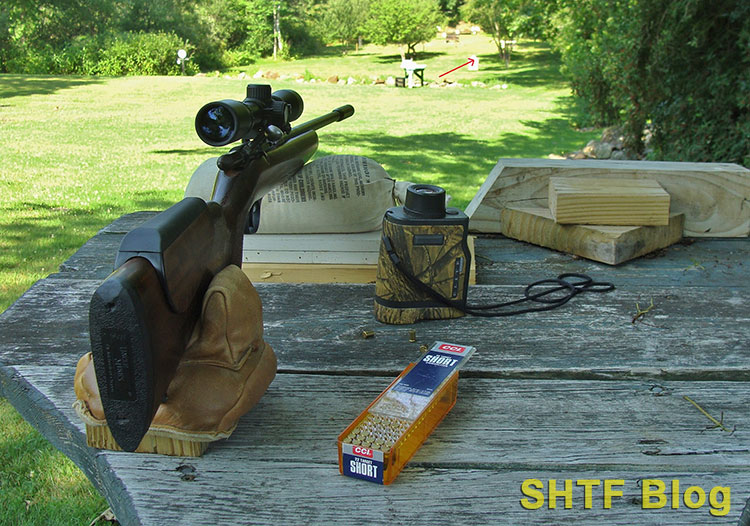
Just like the airgun take a look at, I led off with five-shots at 100 yards. Drop was lower than anticipated; 11 ½”. Accuracy, though not stellar, was “okay”, with 4 of the 5 pictures in 2”. After marking the holes, I moved the goal ten yards nearer and switched to 3-shot teams. That course of continued all through the remaining yardages, ending at 40 yards. The skimpy 3-shot teams helped reduce complicated overlaps.
.22 Shorts Vs Airgun – Outcomes
So far as trajectory goes, the wimpy standard-velocity .22 Shorts trounced my zippy .22-caliber airgun pellets. The distinction grew to become extra evident at 70 yards.
| Yards | 40 | 50 | 60 | 70 | 80 | 90 | 100 |
|---|---|---|---|---|---|---|---|
| Traj. (inches) | 0 | -1 | -3 | -6 | -9 | -13 | -17 ½ |
| Yards | 40 | 50 | 60 | 70 | 80 | 90 | 100 |
|---|---|---|---|---|---|---|---|
| Traj. (inches) | 0 | – ½ | -2 ¼ | -4 | -6 | -8 ½ | -11 ½ |
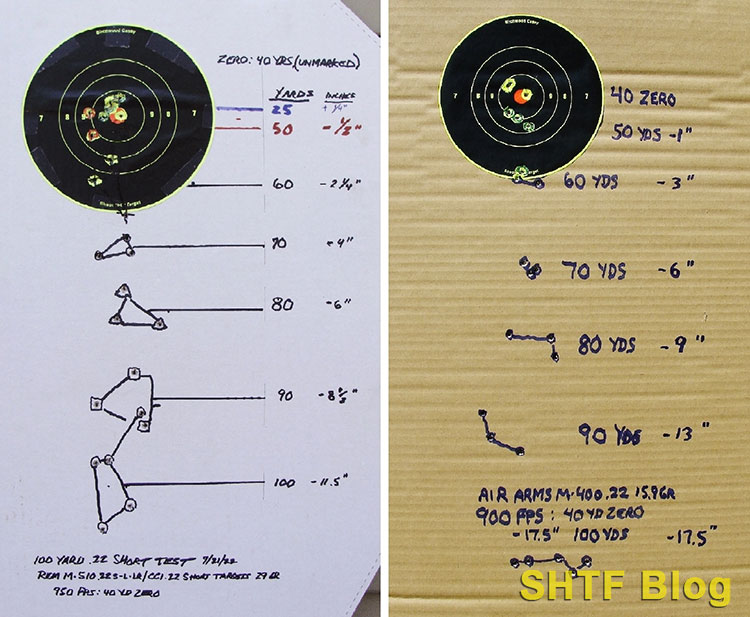
Three extra Shorts fired from 25 yards hit solely ¼” above their 40-yard zero – flat sufficient to cowl 50 yards. Truly, in that respect, the airgun wasn’t dangerous both.
Power
No contest right here: The Shorts clobbered my airgun. No manner I may make that up with heavier pellets as a result of their velocities would tank.
The above speeds have been established by way of my chronograph. The ensuing foot kilos of muzzle power (ME) are ceaselessly used to charge airgun “energy”. Out of curiosity, I checked the .22 Quick knowledge towards JBM’s on-line ballistic calculator.
The trajectories have been an in depth sufficient match for use interchangeably, that means their 100-yard velocity and power figures ought to be correct.
http://www.jbmballistics.com/cgi-bin/jbmtraj_simp-5.1.cgi
JSB’s 100-yard .22 Goal Quick knowledge confirmed 822 fps, and 43.5 remaining foot kilos: 13 ft. lbs. greater than my airgun pellets generated on the muzzle! Sounds spectacular, however let’s put all of it into context. Most traditional velocity .22 LR, 1150 fps, goal masses clock round 980 fps at that distance, with 85 ft. lbs. of residual power.
These figures will change with velocity, however CCI’s .22 Goal Shorts dangle in there surprisingly properly in shorter barrels – to a degree. In typical handguns anticipate higher loss, and plenty of further noise.
Noise
Regardless of the Remington’s 24” barrel, the airgun received this spherical.
That mentioned, though the Shorts have been louder than my pre-charged air rifle, the distinction was on no account substantial. I’d charge both yard pleasant. For extra about these topics, in addition to CCI’s .22 LR “Quiets” and CB Caps, and so on., right here’s the hyperlink:
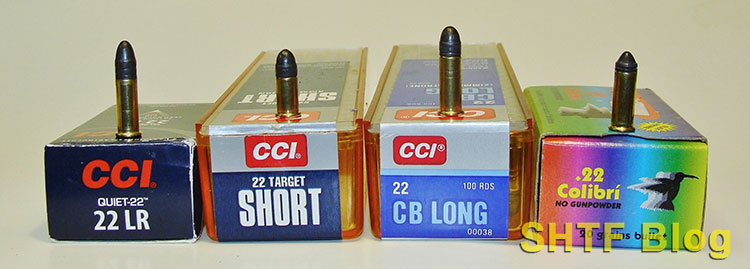
.22 Shorts Ammo – A Rimfire Shooter’s Information (shtfblog.com)
Accuracy
Main airgun victory right here, which got here as no shock.
As famous above, the Air Arms is a tack-driver; no barrel heating, fouling, or maintain sensitivities (a priority for a lot of “springer” designs). Rimfire rifles will be fussy and .22 Quick accuracy is usually a crap shoot past 25 yards. Throughout a separate 50-yard take a look at, I had excessive hopes for my correct .22 LR Anschutz M-1416 bolt-action, however the Shorts have been a flop.
However, my beater Remington shot acceptably properly. However the airgun was in a league of its personal. It additionally posts single-digit velocity variations, whereas Shorts produce a lot greater spreads (62 fps from the M-510). That issue, and their soar by the .22 LR chamber, might account for infrequent fliers (makes me surprise what would occur with a real .22 Quick chamber).
Additionally price noting, typical airgun pellets are mild sufficient to wander in wind. Out towards 100 yards, the end result may reverse.
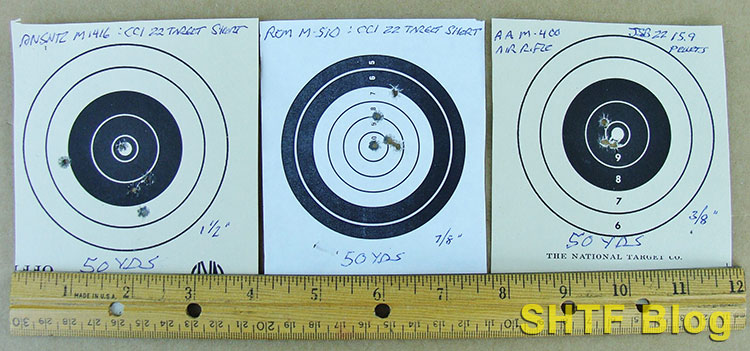
The Fiddly Issue
May very well be a tie, relying on the design of the motion.
Firing Shorts by the Anschutz required single loading, a “fiddly” course of. However at the least its chamber is accessible, not like others, to incorporate Ruger semiauto 10/22s – single-loading PITAs. By comparability, I simply dropped ‘em into the feeding tray of my single-shot Remington, which loaded and ejected them with out difficulties.
The method was simpler than my single-shot air rifle BUT, I additionally personal a repeating PCP Air Arms that includes a detachable 10-shot journal – a breeze as soon as its crammed. Then once more, identical is true of .22 S-L-LR repeating bolt and lever-actions fed from tubular magazines – which generally maintain plenty of Shorts!
Indoor Residential Capturing
The airgun owns this one.
For security’s sake you’re higher off saving the above .22 masses for outside taking pictures, over issues relating to lead toxicity and penetration (the two×6 photograph illustrates the latter). Which doesn’t rule out the potential for creating an reasonably priced indoor airgun vary:

Construct a Residence Airgun Capturing Vary in 10 Steps
Youth Potential
May very well be one other tie.
Springers will be arduous to cock and hold-sensitive, however a charged PCP gun is as straightforward to shoot as bolt-action .22 rifle. However there are additionally some supreme youth-sized .22 rifles in the marketplace that let commencement to .22 LR masses. Utilizing the latter, add a primary scope and also you’ll be good to 100 yards with solely minor holdovers. However safety-wise, it’s a draw. All require the upmost respect!
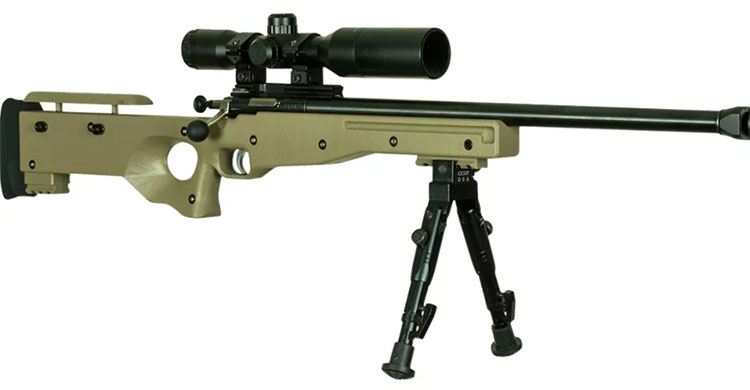
Keystone Sporting Arms Crickett Precision Single-Shot Rifle Bundle
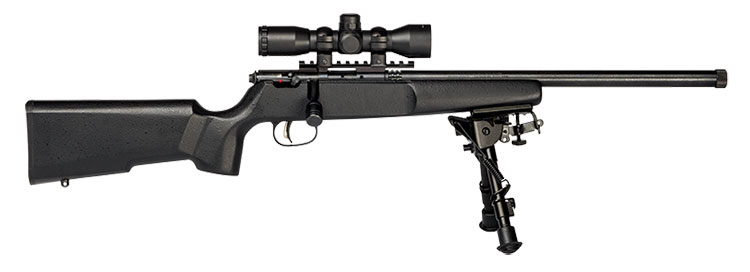
The Winner?
It in all probability boils all the way down to utility.
Benjamin’s repeating Marauder is fashionable USA-built PCP rifle. It earns good critiques and sells for round $570 – about half the price of my British-built Air Arms rifle! However you’ll nonetheless want a technique to cost it. I take advantage of a scuba tank, however the easiest answer is a purpose-built hand pump (like Benjamin’s), which provides $210 further {dollars}.
Less expensive PCP weapons can be found, however some function at greater pressures, making them more durable fill. And, on the distances coated above, you’ll need a scope, pushing the entire towards a grand. On a optimistic observe, airguns are exempt from federal laws.
Thus, absent any state or native restrictions, a whole system (to incorporate good pellets), could possibly be shipped on to your door. It’s also possible to shoot them in locations the place firearms could be off-limits, a giant win for a few of us!

Benjamin Marauder, Artificial for Sale
Or, when you already personal an appropriate .22 firearm, for lower than $15, you can attempt a field of .22 Shorts! Expectantly, you could rival the efficiency of a 30-grain .22-caliber airgun slug. It takes plenty of strain to drive heavier airgun projectiles of any sort with out sacrificing velocity – greater than most springers and plenty of PCP rifles can produce. These as much as the job are typically costly – and loud.
So, if firearms restrictions aren’t a priority, the answer could possibly be a lower-powered rimfire load. To stretch the vary the answer is a .22 Quick. The downsides: top-flight accuracy could possibly be elusive, and a basement vary is out. Additionally, for security’s sake, you’ll have to brush the ensuing annular fouling ring out of the chamber to stop the potential for a caught .22 LR cartridge – a a lot simpler job with a bolt-action.
And when you’re already sighted-in .22 LRs, the change to .22 Shorts will in all probability require a special zero (particularly when shot at additional distances). For more information about rimfires, right here’s a hyperlink to Rimfire Rifles: A Patrons and Shooter’s Information:
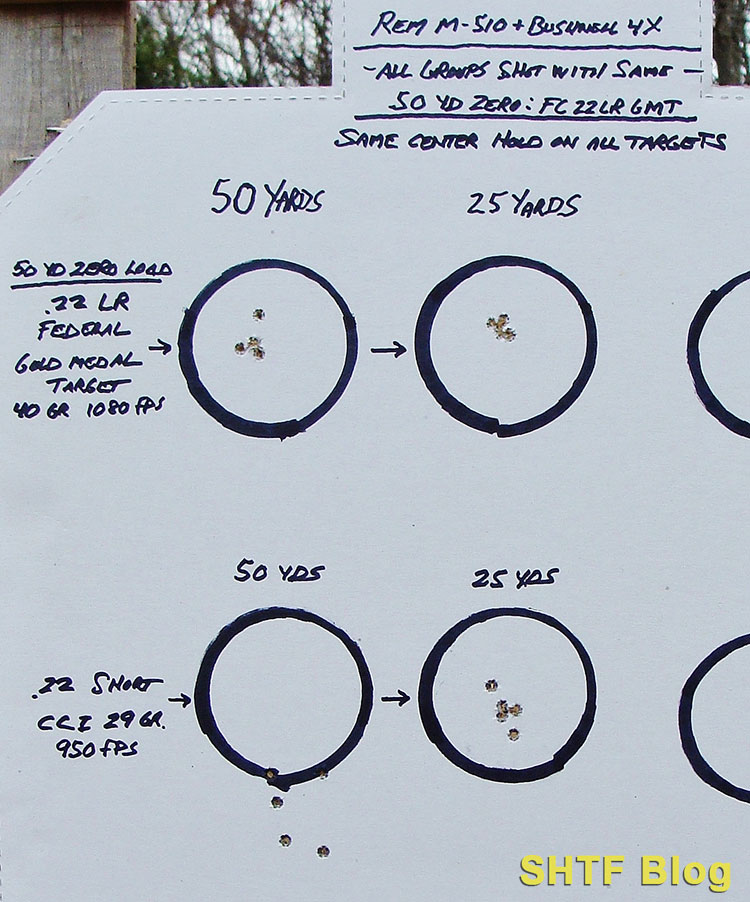
Parting Pictures
When utilizing scoped rifles, I zero .22 LR masses at 50 yards. However for both rimfire or airguns within the above velocity ranges, 40 yards could possibly be the extra sensible sight-in distance- particularly for shooters with scopes minus hold-over provisions.
Relating to THE ultimate alternative, so far as I’m involved, each are downright helpful for quiet taking pictures in tighter settings. The larger problem with Shorts could possibly be their intermittent availability – the rationale I top off after I can. I wouldn’t be too hung up on manufacturers although.
A number of main producers produce at the least one model of the .22 Quick, and your chamber may simply favor a special model than mine. The one technique to discover out is to attempt ‘em.
Blissful taking pictures!
